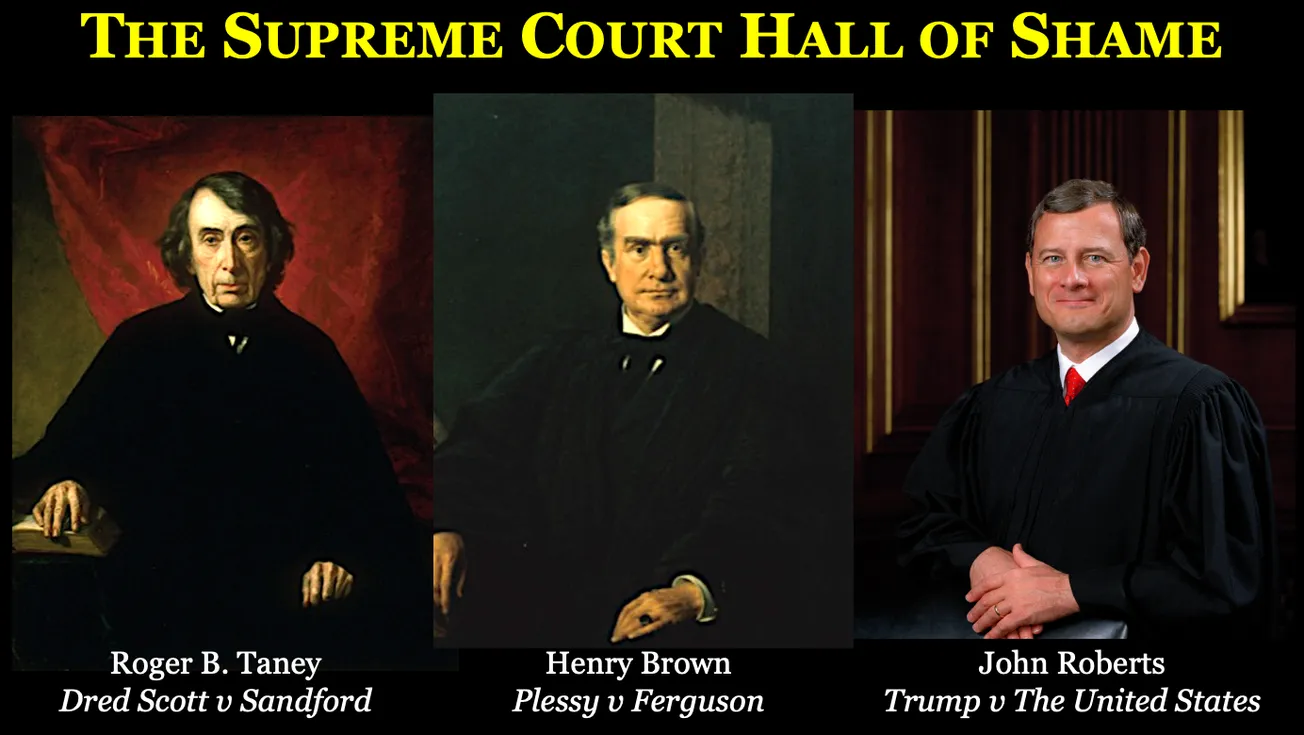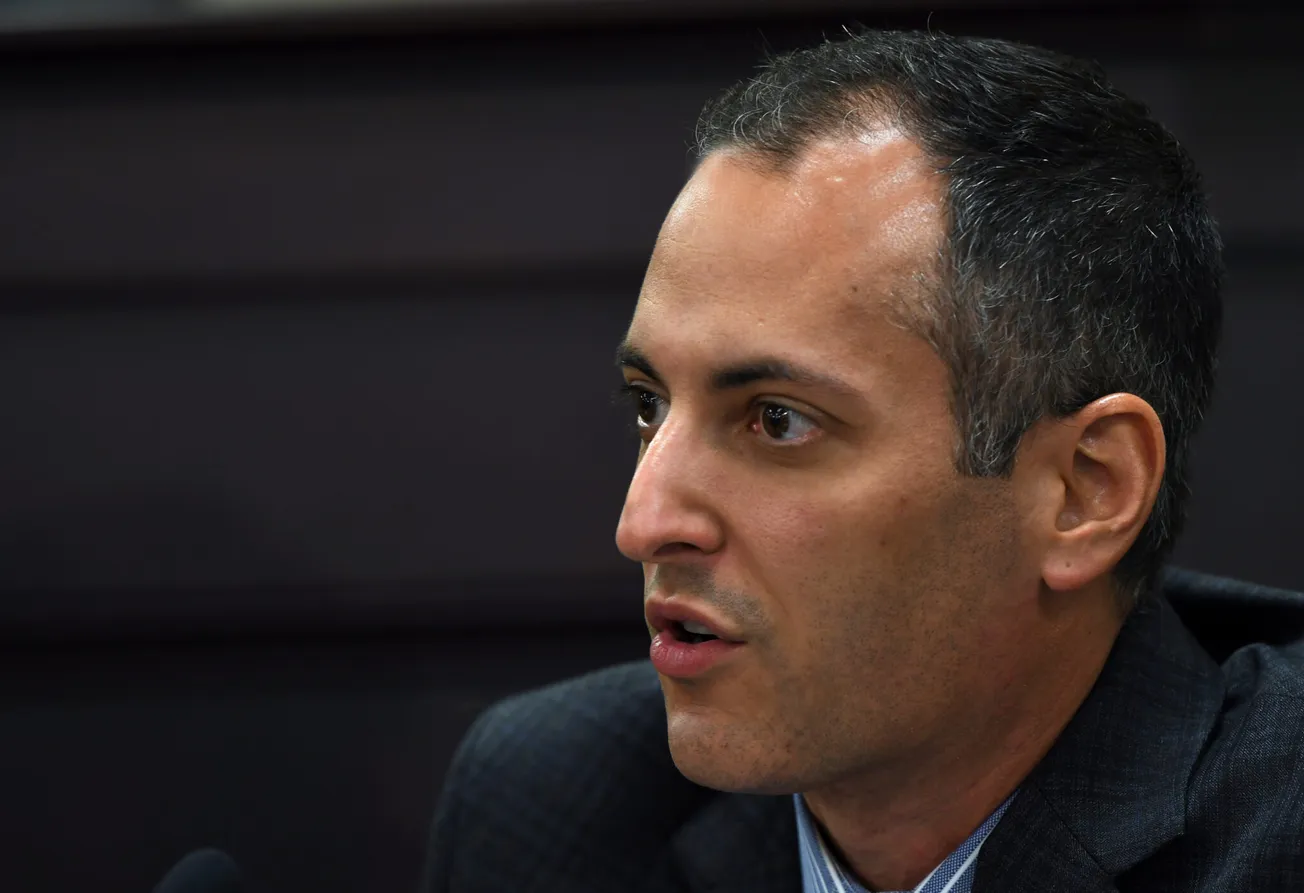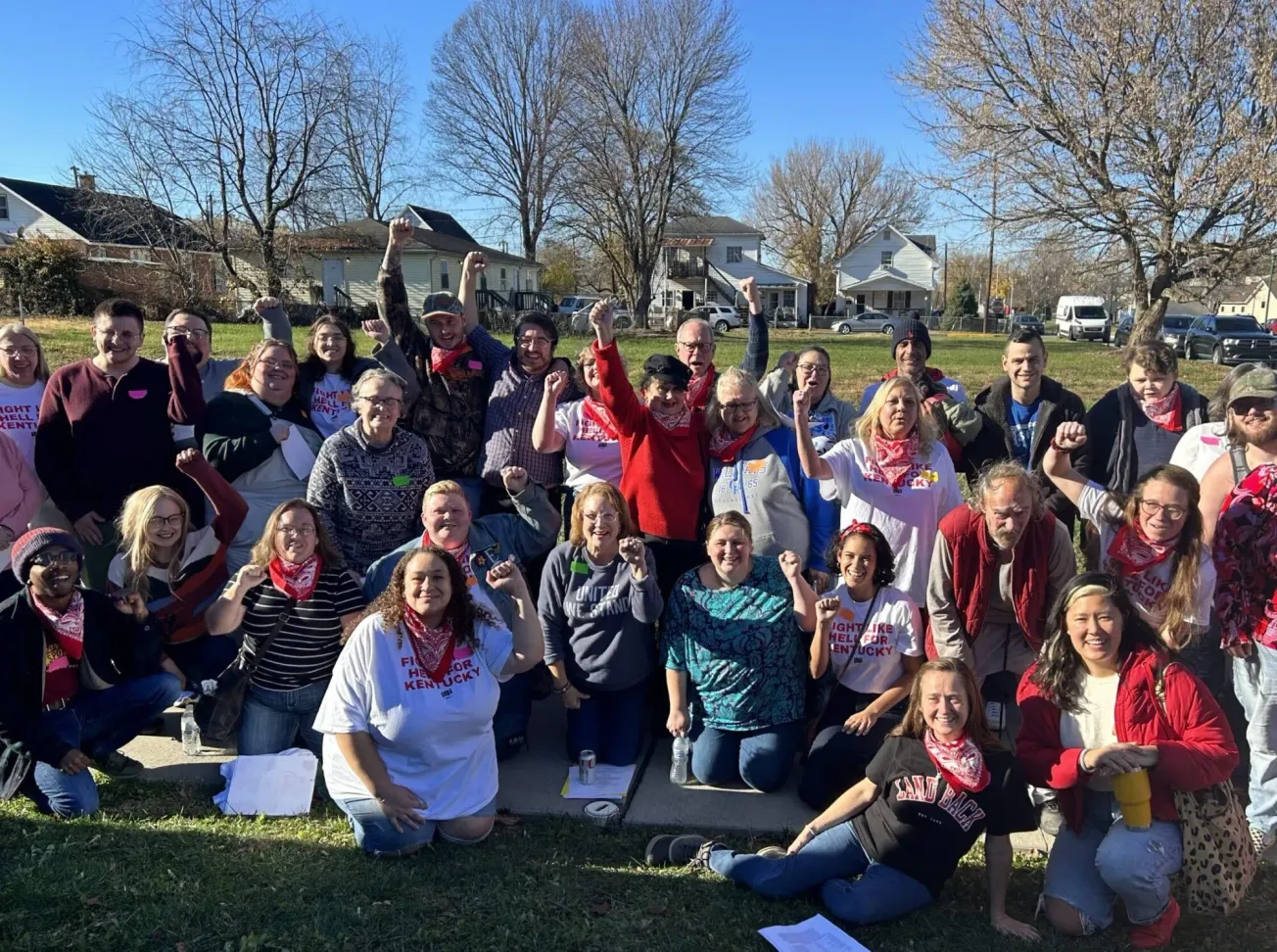Move over, Roger B. Taney. Make room, Henry Brown.
John Roberts is joining you in the Supreme Court Hall of Shame.
Roberts wrote the MAGA majority opinion in Trump v The United States. The 6-3 decision gives a president — they hope Donald Trump again, come Jan. 20 — unprecedented broad immunity for official acts. The ruling all but guarantees Trump will never face justice in a federal court. (The decision also complicates the Georgia state case against him.)
“In his 43-page ruling, Roberts gave the lower courts a precise road map to exonerate Trump from wrongdoing, using tortured logic,” Robert Kuttner wrote in The American Prospect.
“... Despite the disingenuous pretense of sending the case back to the lower courts, the Supreme Court left little doubt about the direction of its final ruling. The Court’s action ... is an invitation to dictatorship, and one more cost of Trump’s having been allowed to name three justices. Had the Supreme Court ruled similarly on Richard Nixon’s claims of being above the law, Nixon never would have been forced from office.
“The Court is now a corrupted institution and a shameless enabler of a corrupt president.”
Writing in Esquire, Charles P. Pierce flayed “the carefully manufactured conservative majority on the Court” for ruling “that ... presidents — specifically, Donald J. Trump, because if you think this decision will apply to Democratic presidents, please tell me where you buy your mushrooms — have something called ‘presumptive immunity’ for ‘official acts’ they took while in office.”
See me about some prime oceanfront property in western Kentucky if you believed the right-wing justices would rule against him. He nominated half the MAGA majority.
“In the short run, of course, this whole case, on which the Court never should have granted cert in the first place, was directly aimed at delaying the prosecution of the former president until after the November election and thence, likely, to the Twelfth of Never,” Pierce wrote. “It certainly has accomplished that goal. It’s going to take months, if not years, for lower courts to distinguish between ‘official’ and ‘unnofficial’ acts and every attempt will be appealed, and then appealed again.”
Trump v US has now joined Dred Scott v Sandford (1857) and Plessy v Ferguson (1896) as the worst-ever Supreme Court rulings.
In Dred Scott, the high court ruled 7-2 that no African American, slave or free, could ever be a citizen, and that Congress had no power to exclude slavery from the federal territories.
Chief Justice Taney, a Maryland slaveholder, wrote the majority opinion.
Justice Brown wrote the majority opinion in Plessy. The court ruled 7-1 that Jim Crow segregation in the South was constitutional as long as it was “separate but equal.” It wasn’t, of course.
Fifty-eight years ago, I was taught in my high school government class that the Supreme Court makes rulings solely based on the constitution and the law.
Studying Dred Scott and Plessy in my college history classes put away the notion that the highest court in the land always soars above partisan hackery. Trump v US is more proof.








